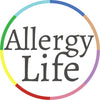Hypersensitivity type may be- Type IV Allergy
Immune reactions may be from- T Cells
Reactions may occur in- Over 24 Hours
Spread by the release of tiny, light spores during its reproduction, Mould travels through the air, to find a dark, damp and organic space to spread.
A Mould allergy reaction occurs when mould is inhaled or ingested by a person that is allergic to mould. Damp walls, cellars, bathrooms, basements, attics, washing machines, rubbish bins, stale foods and humidifiers are just some of the many places where mould may develop and be found.
In everyday life it is quite common to be exposed to mould and people can generally notice the signs, for example it can be noticed by fuzzy green spots on food or dark markers on a wall corner in a dark place.
Mould also has beneficial characteristics and is used in some foods (such as Cheese) and antibiotics due to it. This makes it vital for someone with a Mould allergy to ensure they are prepared for a variety of situations, in which they can come in contact with mould.

FOUR MOST COMMON 'ALLERGY CAUSING' MOULDS
The four moulds that most commonly may cause reactions include-
- ALTERNARIA- May be found in many places including in damp areas such as textiles, cardboard, paper and canvases.
- CLADOSPORIUM- May be found in many places including soil, old plants (especially their litter) and indoors (bathrooms, kitchen, inside wallpapers, etc)
- PENICILLIUM- May be found in many places including on building materials, spoiled food (bread, oranges, etc) and soil. A harmless strain of this is also used to make certain safe to eat cheeses. Penicillium mould also produces an extract for the antibiotic penicillin.
- STACHYBOTRYS- Also sometimes referred to as "black mould", this may be found in many places including any areas that have a high moisture intrusion, such as dry wallpaper, straw, soil, decaying plant materials, seeds and leaf litter. They may also be found indoors with places that have water damage.
- ASPERGILLUS- Present in the air we breathe, this mould may be found in many places such as ventilation systems, soil, decaying plants and indoors (bathrooms, kitchen, inside wallpapers, etc).
SYMPTOMS
Some of the symptoms may be characterised by:
- Nasal congestion
- Itching
- Sneezing
- Coughing
- Skin rashes
- Hives
- Eczema
- Hay fever
- Difficulty breathing
- Gastrointestinal symptoms
- Asthma aggravation
- ANAPHYLAXIS
The validity and severity of these symptoms are dependent on the individual and the level of exposure, as determined by a qualified health care provider.
TREATMENT
If you experience or are in the presence of someone who encounters a serious reaction (this may include difficulty breathing, wheezing, throat tightening, swelling, collapse, etc), follow their action plan or emergency instructions and call or have someone call Triple Zero (000) immediately.
Adrenaline (Epinephrine) is the first-line treatment for Anaphylaxis. After administering Adrenaline (Epinephrine), seek emergency medical attention by calling Triple Zero (000) for an ambulance.
If you are unsure what to do, call Triple Zero (000).
If you or someone you know is suspected of having an allergy, it’s important to discuss diagnosis, symptoms and treatment with a qualified health care provider to understand how to manage individual allergies and also to set up an Allergy Action Plan in the case of a reaction.
Always present your Allergy Card, Medical Alert Bracelet, Action Plan or Necklace to ensure health care providers, family members, friends, colleagues and others are aware of your Allergies.
TESTING
A skin prick test or a blood test may be used to test for a Mould Allergy.
A Mould Allergy may also require testing of the environment where the allergen was encountered for further examination.
LABELLING
Products usually focus on the removal or reduction of allergens. Some labels or terms you may come across on Mould Allergy friendly products:
- "Anti-Mould"
- "Mould Killing"
- "Mould Control"
RANDOM MOULD FACT
The discovery of Penicillin (antibiotics originally obtained from Penicillium moulds) in 1928, allowed previously infectious diseases to be easily treated and had a significant influence in the world of medicine.
The information provided on Allergy Life Australia is to generally educate and inform you about living with allergies, intolerances and conditions, and is not intended as medical instruction or as a substitute for diagnosis, examination and advice by a qualified health care provider.




